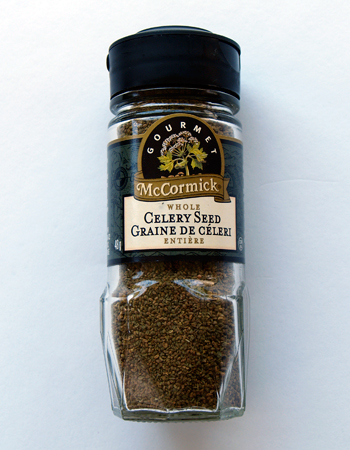 Celery Seed
Celery Seed© Denzil Green
Celery seed doesn’t actually come from the same celery plant that we eat.
The ancestor of celery is a plant called “smallage” or “Wild Celery.” It is still grown in its own right in Asia, where they prefer the stronger flavour. From smallage, two descendants evolved with the help of man. “Stem Celery”, the celery that we eat for its stalks, and “Celeriac”, the celery that we eat for its roots.
The seeds are taken from smallage. Smallage produces white flowers in its second year, and then seeds. One acre of plants will produce around 500 pounds (225 kg.) Reputedly, it takes 760,000 seeds to weigh 1 pound (450 g.)
Very little seed is produced in North America; most is imported from Asia.
Celery seeds are brown and very small in size. They have a powerful celery flavour with a tinge of bitterness, so use sparingly.
Celery seed is used in a lot of pickling mixes.
The seed can be purchased whole or ground. When ground, it can be purchased on its own, or mixed with salt to become celery salt.
Equivalents
2 tablespoons celery seed = 1 tablespoon celery seed, ground (aka powdered)
Substitutes
Instead of buying and using celery seed or salt, consider the tip on frozen celery in the main entry for celery. Or, try lovage seed (though that’s pretty much impossible to get hold of these days, unless you grow it yourself.)
History Notes
The seed was used as a medicine by the Egyptians, Greeks and Romans. It wasn’t used for any cooking purposes until the 1600s.

